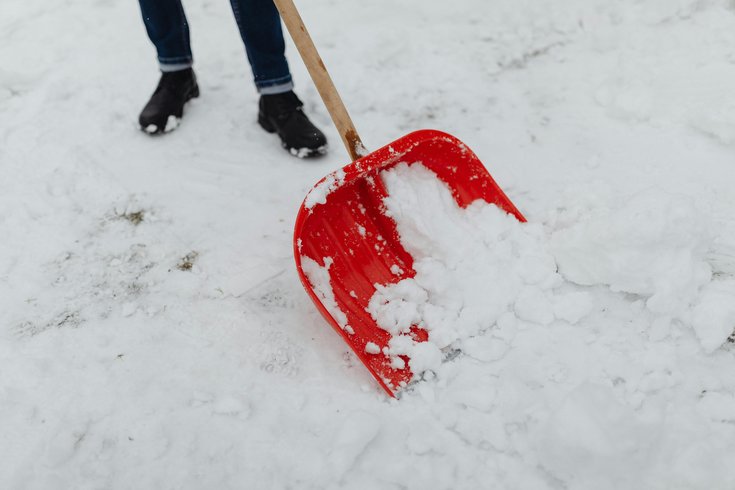
January 18, 2024
 Karolina Grabowska/Pexels.com
Karolina Grabowska/Pexels.com
Snow shoveling can put some vulnerable groups of people at a high risk of having a heart attack, but there are ways to prevent putting too much strain on the heart while shoveling.
Snowfall during the winter months often requires timely action to clear paths for walking and moving cars, but many people who throw themselves into shoveling could be at an increased risk of having a heart attack.
Shoveling snow is a strenuous activity that places disproportionate strain on the upper body. Breathing cold air at the same time constricts blood vessels throughout the body, putting added stress on the heart.
The American Heart Association issued an advisory this month about the risks of snow shoveling and suggested strategies to avoid overworking the body.
"Shoveling a little snow off your sidewalk may not seem like hard work. However, the strain of heavy snow shoveling may be as or even more demanding on the heart than taking a treadmill stress test, according to research we’ve conducted," said Dr. Barry Franklin, director of preventive cardiology and cardiac rehabilitation at Corewell Health East and a longtime AHA volunteer.
Although shoveling snow can lead to heart attacks in otherwise healthy people, Franklin said those who are overweight and live sedentary lifestyles face the greatest risk. Other risk factors include being a current or former smoker, having diabetes and having high cholesterol or high blood pressure.
"We often see events in people who are usually sedentary, they work at a computer all day or get little or no exercise," Franklin said. "Then once or twice a year they go out and try to shovel the driveway after a heavy snowfall and that unexpected exertion can unfortunately lead to tragedy."
Studies conducted by Franklin and his colleagues found that in just two minutes of snow shoveling, the heart rates of participants exceeded 85% of their maximum capacity. That's usually experienced during intense aerobic exercise, but many people lack the fitness level to withstand such high heart rates.
Part of the problem with shoveling is that the exertion involved is mostly stationary and relies heavily on the arms, which demands more from the heart than the legs. In fact, a lack of leg movement causes blood to pool in the lower limbs, keeping the heart from getting fresh oxygen. Since lifting heavy loads of snow also tends to make people hold their breath, they're more likely to have an increased heart rate and blood pressure as they work.
"You’re asking your heart to do a lot more work in conditions that are diminishing the heart’s ability to function at its best," Franklin said.
Studies on injuries related to shoveling snow show that people experience a range of issues that require medical treatment — most commonly muscle injuries and lower back pain. But cardiac injuries, when they occur, are often deadly.
In one study, the American Journal of Emergency Medicine looked at snow shoveling-related injuries in the U.S. between 1990-2006. An average of 11,500 people had medical emergencies each year, with heart-related visits to the hospital accounting for 6.7% of total cases. That group accounted for all of the 1,647 deaths in the study. Notably, about two-thirds of all medical emergencies happened among males, with adults over 55 making up 21.8% of the incidents studied.
Some people should avoid shoveling altogether, Franklin said. That includes people who have had bypass surgeries or coronary angioplasty. People who have had previous heart attacks or strokes also should avoid shoveling if possible.
People who are out shoveling should monitor how they feel and pay attention to possible signs of a heart attack. Pain or pressure in the chest and lightheadedness may be an indication that something is wrong. Heart palpitations or other heart rhythm irregularities also are concerning symptoms.
People who feel any of these symptoms while shoveling snow should stop immediately. If the symptoms don't go away shortly after stopping, it's best to call 911.
Other symptoms of a heart attack may include unusual shortness of breath, nausea, a sudden cold sweat and discomfort in parts of the upper body, including the neck, arms, back and jaw.
Anyone who witnesses a person collapse while shoveling snow should call for help and use hands-only CPR if the person is unresponsive and has no pulse.
The American Heart Association recommends people use the following strategies to reduce the risk of having a heart attack while shoveling snow:
• If you have known or suspected heart disease or risk factors for heart disease, have someone else do your snow removal.
• If you must shovel snow, always start gradually and pace yourself. Make sure to wear layered clothing, wear a hat and gloves and cover your mouth and nose.
• When possible, push or sweep the snow away rather than lifting and throwing it, since this involves less exertion.
• Be mindful and use extra care when it's windy. Wind makes the temperature feel colder than it is, putting more strain on the body.
• Consider using an automated snow blower instead of shoveling. Research shows that using a snow blower raises the heart rate to around 120, compared to a heart rate of around 170 while shoveling.
Franklin reiterated that people who are at high risk should take extra care when shoveling snow.
"The impact is hardest on those people who are least fit," he said.